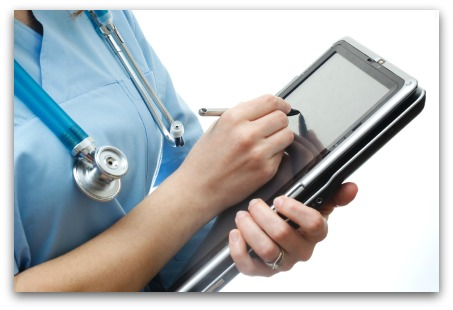SD6 Members partner with a number of different Best of Breed products to design a solution that best fits our client’s needs. This means that as their practice they prescribe systems and technologies suited best to serve the specific desires of their clients.
Sphere3 Aperum® is a product offered by all the SD6 members and has a strong ability to influence improvement for the hospitals Patient Experience domain scores.
The following interview is with Rod Corn, Vice President of Strategic Initiatives for Sphere3.
Rod, thanks for joining us today, could you take a moment to introduce your experience prior to joining Sphere3.
I joined Sphere3 full time in the fall. I have worked in healthcare for over 37 years primarily in operations Olathe Medical Center. By Operations I mean that I started with managing all of the ancillary departments such as building services, housekeeping, PT, etc and was promoted to the COO. I took on everything from IT to Laboratory. All while transitioning the hospital to a new location.
I wanted to try my hand at the technology world. Had the opportunity to launch Sprint Healthcare System that supported application development and rollout for Local, Long Distance, and Wireless divisions. We were early modelers of Telemedicine, Community Health Information Networks, and early patient satisfaction surveys. It was a great experience and a lot of fun doing something exciting.
Direct hospital work called my name so I returned as the COO of the Olathe Health System. We developed one of the largest master planned healthcare vertically integrated healthcare campuses with over 350 acres that included everything from acute care to a retirement village. I also managed all of the Health Information Management and negotiated the Cerner contract for meaningful use. After 12 years I stepped down and did a few different roles with companies developing hospitals and health systems.
Tell me about Patient Experience.
Patient Experience is the cross section of quality and satisfaction. It is the balance between doing pleasing the patient and serving their needs most appropriately. Caring for patients is not an easy task – they are not generally happy about being at the hospital, they don’t feel well, and it can be a scary place. There is a lot going on – sometimes it feels like decisions are made “about” them instead of “with” them. So we as hospital administrators have to find a methodology to collect their feedback and apply their feedback – all while monitoring the workload they are generating and maintain high levels of safety.
Did you do Leadership Rounds when you worked as a Hospital Administrator?
Yes! When I was at Olathe, I did leadership rounds on patients on a regular basis. I would tell my secretary “Well I am going out to do my Forrest Gump box of chocolate rounds, because I never know what I am going to get.” Which is the truth! I would walk into a patient room with no understanding of their care, their behaviors, or previous feedback. It was like walking in blind. One of the things I appreciate most about the Aperum® tool is that it gives you a full picture of their behaviors which we gather from Nurse Call Light activity, Bed data, RTLS and even Cardiac monitors. Plus, it gives a really easy to see and understand visual of the notes associated with each round.
Additionally, when we would receive our patient satisfaction reports from Press Ganey or Healthstream or whoever had the contract at the time – it was several weeks old. Aperum® is a real paradigm shift in leadership and management as it is real time and can be applied at the point of care. Plus, the information is linked to where they were discharged – so they may have been on 3 or 4 different units or rooms and we had to associate the feedback with the final location.
So, was that what attracted you to Sphere3?
Absolutely. The role that Aperum® plays in patient satisfaction – most importantly the caregiver satisfaction. Caregiver Satisfaction is a direct correlation to Patient Satisfaction. Nursing is the heart of the hospital and they have the most direct patient interaction of all. Hospitals have a big challenge with recruiting and retaining quality staff and they don’t have a good way to manage their workload effectively.
After seeing Aperum® – I knew that this application would give real insights for the leadership to understand the true workload. It’s a game changer – I have worked in the emerging technology space before when I was at Sprint and introducing that into the marketplace is exciting. I wish I would have had a tool like this when I was leading an organization.
So data is great but how do you make this all work? It seems like a big under taking for a hospital to take on one more “program”.
I agree, I have been in that spot myself during my tenure at Olathe. We completely understand. Part of the Sphere3 model is that we provide a team – which we call our Blue Pants Team – that partners with clinical leadership on a regular basis. That team becomes an extension of the hospital meeting regularly with the staff to review their leadership rounding practices, and doing regular gap analysis. The software is only part of the Sphere3 story – we really become a part of the hospital team as we work to integrate the data and patient feedback into the culture of the organization.
What about Nurse Call data? What is the real value behind that from a hospital perspective?
Nurse Call data is a way to document the behaviors of the patient AND the abilities of the care team to manage their care. It’s a real cornerstone of understanding. EMR documents based on the observation of the care team but Aperum® documents based one the actions, requests, and even cardiac alarms of the patient.
Often we hear hospitals talking about the need to know how long it’s taking them to respond to patients – a real service level perspective of the data. What I find fascinating is that this data really gives a good picture of the patient’s behaviors and presents it in an easy to use mobile view.
So it’s important that the nurse call data is what we call “clean” and free of gaps. It’s important that the manufacture treats it as important and not just information that can be used to troubleshoot their technology. The value is in the understanding it provides us about patients.
Who has been the strongest nurse call partner to Sphere3?
We are at our core vendor neutral – we believe that data is data and our job is to find it, normalize it, and record it. The hospital has to make the choice on what vendor serves their needs best and while we have our opinions based on our history in the consulting space, we are committed to partner to make any system work.
However, by far the Rauland Responder 5 nurse call system has been the strongest integration and best partner. Rauland has over 60% of the acute care space across the US and their data is very solid. We are pleased to have been able to partner with the SD6 nationwide to provide Aperum® to their customers.
Thanks again for your time, is there anything you would like to close with?
We welcome the opportunity to talk to any hospital who would like to see improvement in the patient experience domain scores. We recently completed an impact study with Centerpoint Medical Center and were able to garner great improvements and show a positive ROI. Our techniques are proven to show improvement. Please contact your local SD6 partner to get more information.


